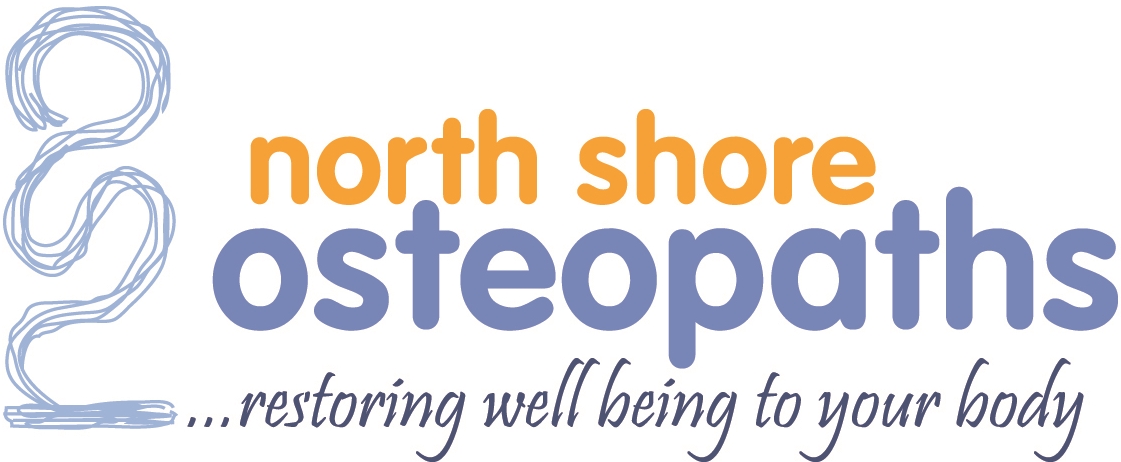
Why an Osteopath’s Perspective is Vital in Addressing Tongue Ties
Tongue ties in babies, medically termed as TOTs (tethered oral tissues), have become a prevalent topic of concern among new parents. While the condition itself is not new, the growing awareness around its impact on feeding, speech, and overall oral development is evident. With such an upsurge in awareness, the importance of a holistic approach to addressing tongue ties is clear. And at the forefront of this approach is the invaluable perspective of an osteopath.
So, why is the osteopath’s perspective so crucial?
1. Comprehensive Assessment:
When it comes to addressing tongue ties or any other health concerns in infants, a mere surface-level examination often falls short. Osteopaths stand out in their approach, owing to the depth and breadth of their assessment techniques.
A Holistic Viewpoint: The strength of osteopathic practice lies in its holistic perspective. Rather than zooming in exclusively on the evident problem – in this case, the tongue tie – an osteopath evaluates the baby’s entire bodily system. This includes the interconnectedness of muscles, bones, ligaments, and other tissues.
Beyond the Obvious: A tongue tie, while a prominent concern, is often associated with underlying structural or muscular tensions. An osteopath’s detailed examination may reveal tensions in the jaw, misalignment in the cranial bones, or restrictions in the neck – all of which can be intertwined with the presence of a tongue tie.
Root Cause Analysis: The focus of osteopathy is not merely on identifying and treating the overt symptoms but delving deeper to understand and address the root causes. This is crucial because treating just the tongue tie without addressing associated tensions or imbalances might not yield long-lasting results. By identifying and treating the foundational issues, osteopaths provide a more holistic approach.
Tailored Treatment Plans: Once a comprehensive assessment is done, osteopaths can design a treatment plan tailored to the baby’s unique needs. This might involve gentle manipulations to release tension, exercises to strengthen specific muscles, or recommendations for further specialised care.
In essence, the comprehensive assessment offered by osteopaths may help babies to receive care that’s not just reactive but proactive, aiming to address potential concerns before they manifest into bigger issues.
2. Holistic Treatment Options:
The recognition of a tongue tie is only the initial phase in a child’s journey to improved oral health. The path to effective treatment is layered and requires a multifaceted, holistic approach. Here’s why a comprehensive methodology, as championed by osteopaths, is pivotal:
Understanding the Full Picture: Tongue ties don’t exist in isolation. They’re a part of a complex bodily system, intertwined with muscles, ligaments, and bone structures. While the telltale signs of a tongue tie – such as the tongue’s inability to lift fully during crying or its hidden underside when the baby is asleep – give initial clues, the journey of treatment delves much deeper.
The Ripple Effects of Tongue Ties: Beyond the evident restrictions in tongue mobility, tongue ties can be associated with other challenges. These might include feeding difficulties, speech development concerns, and even respiratory issues. An osteopath approaches these interconnected challenges with a 360-degree perspective, ensuring all associated issues are addressed concurrently.
Personalised Care: Sharon from North Shore Osteopaths embodies the dedication and precision required in this field. Witnessing the distress and challenges families face due to inconsistent treatments and sometimes fragmented care, she adopts a research-driven, updated approach. With a commitment to continuous learning, Sharon equips herself with the latest methodologies and strategies, offering tailored solutions for each child’s unique needs.
Collaborative Efforts: Holistic treatment isn’t just about variety; it’s about integration. Sharon’s approach goes beyond osteopathic interventions. By collaborating with other professionals like paediatric dentists and lactation consultants, she ensures that the child benefits from a collaborative network of care. This integrated approach magnifies the positive impacts of treatment, paving the way for optimal oral health and overall well-being.
In sum, holistic treatment options, rooted in thorough research and interdisciplinary collaboration, ensure that the child’s care isn’t piecemeal but a harmonised effort, addressing the entirety of their health needs.
3. Collaborative Care:
The realm of healthcare, especially when addressing intricate challenges like tongue ties, necessitates a collective approach. It’s not about one practitioner knowing all, but about a network of experts harmonising their skills for the best patient outcomes. Here’s a deeper dive into the essence and importance of collaborative care in osteopathy:
Synergy of Expertise: Each healthcare profession, whether it’s osteopathy, dentistry, or lactation consultancy, comes with its specialised knowledge and tools. When these are brought together, they create a synergy where the collective impact is greater than the sum of individual contributions. Sharon, by embracing this collaborative ethos, amplifies the quality of care provided to her young patients.
A Comprehensive Journey: Tongue ties, while seemingly straightforward, intersect with multiple areas of a child’s health. They can influence feeding patterns, oral development, speech progression, and more. Collaborative care ensures that every facet of this multifarious issue is addressed. From the initial diagnosis by an osteopath, to interventions by paediatric dentists, and support from lactation consultants for breastfeeding challenges – each stage is meticulously handled.
Continuity of Care: Collaboration isn’t merely about diagnosis and treatment. Post-operative care, as emphasised by Sharon’s practice, is equally critical. Osteopathy offers post-surgical support, with the aim of getting the best result from the release. This might include gentle manipulative therapies to ease discomfort or exercises to promote optimal healing.
Shared Knowledge and Updated Practices: Being part of an institution like Astlit for nearly a decade underscores Sharon’s commitment to staying abreast of the latest in tongue tie research and interventions. Collaborative environments are breeding grounds for shared knowledge. By constantly interfacing with professionals across disciplines, Sharon ensures that her methods and approaches are always rooted in the most recent, evidence-based practices.
Enhanced Trust and Comfort: For families, knowing that their child is in the care of a team of specialists, all communicating and working in tandem, provides an added layer of assurance. They can trust that every angle is being considered, every potential challenge is being preemptively addressed, and their child’s well-being is the central focus.
In essence, collaborative care, as championed by professionals like Sharon, represents the future of healthcare – a system where integration, shared expertise, and collective responsibility take centre stage, ensuring that patients receive holistic, comprehensive, and effective care.
4. Preparation and Rehabilitation:
The journey of addressing tongue ties extends beyond the mere moment of surgical intervention. Like any other medical procedure, the stages before and after are paramount in dictating the success and efficacy of the treatment. Let’s delve into the significance of “prehab” and “rehab” in the context of a tongue tie release, as championed by osteopathic practices:
The Essence of “Prehab”:
Understanding the Value: Just as athletes prepare for a big event or patients condition themselves before major surgery, “prehab” for a tongue tie release is about setting the stage for success. It’s the groundwork, the preliminary steps to help prepare for the procedure.
Osteopathic Conditioning: The exercises introduced by osteopaths in the preparatory phase are methodically designed to condition the oral structures, making them more receptive to the procedure. This might involve enhancing tongue flexibility, strengthening associated muscles, or ensuring optimal blood flow to the region.
Emotional Preparedness: Beyond the physical, there’s an emotional component to “prehab”. Parents and caregivers are educated about what to expect, alleviating anxieties and ensuring they’re equipped to support their baby through the process.
The Power of “Rehab”:
Accelerated Recovery: The aftermath of a tongue tie release isn’t just about healing the incision. It’s about relearning and adapting to newfound mobility. Osteopathic exercises in the rehabilitation phase focus on promoting quicker healing, minimising discomfort, and ensuring the tongue functions optimally.
Preventing Complications: “Rehab” is the safeguard against potential postoperative complications. By adhering to a structured regimen of exercises and osteopathic interventions, chances of issues like scar tissue formation, limited mobility, or feeding challenges may be significantly reduced.
Monitoring and Feedback: Rehabilitation is also a phase of close observation. Osteopaths, in their post-operative assessments, can gauge the success of the procedure, monitor the baby’s progress, and tweak exercises or interventions based on individual needs.
A Seamless Continuum: Sharon’s emphasis on both “prehab” and “rehab” underscores the philosophy that medical interventions should be viewed as a continuum, not isolated events. The preparatory and rehabilitative phases are interwoven into the treatment narrative, ensuring a holistic approach that prioritises the baby’s overall well-being over just the surgical outcome.
The twin pillars of preparation and rehabilitation form the bedrock of successful tongue tie treatments. It’s a testament to the meticulous, patient-centric approach osteopathy brings to the table, aiming to make every child’s journey through a tongue tie release smooth, effective, and holistically managed.
In Conclusion: The Holistic Approach to Tongue Ties
When it comes to addressing tongue ties, the broader narrative often zeros in on the release procedure itself – that pivotal moment when tethered oral tissues are corrected. However, this perspective can be reductive, missing out on the nuanced tapestry of factors that make up the full story.
Understanding the Complexity:
At the heart of tongue ties lies a complex ecosystem of muscles, ligaments, and various oral structures. These aren’t standalone entities but interwoven parts of a dynamic system. A tongue tie doesn’t just tether the tongue; it has implications for the entire oral cavity, affecting functions ranging from feeding and breathing to later stages of speech development. Recognizing this intricate balance is crucial, moving the discourse beyond a mere mechanical ‘fix’ to a comprehensive understanding of oral health.
The Bigger Picture: Overall Oral Health and Development:
Addressing a tongue tie is not an end in itself; it’s a means to an end. That end goal? Ensuring the child’s overall oral health and development proceed unhindered. A corrected tongue tie can aid in optimal feeding, prevent speech impediments, and even influence facial growth and dental alignment. However, it’s vital to remember that these outcomes hinge not just on the procedure but on the care and interventions that surround it.
The Indispensable Role of an Osteopath:
In this multifaceted journey, the role of an osteopath emerges as a beacon of holistic care. They don’t merely focus on the tongue tie. Instead, they bring to the fore a broader understanding of the body’s musculoskeletal system, recognizing how various elements interplay and influence each other. Their interventions, both pre and post-procedure, ensure that the baby’s entire oral system is harmoniously aligned and functioning at its best.
Moreover, osteopaths trained in the assessment and treatment of tongue tie offer invaluable support to families, guiding them through the nuances of care, exercises, and monitoring. Their expertise bridges the gap between surgical intervention and long-term well-being, supporting the child’s journey through addressing a tongue tie to be as seamless and beneficial as possible.
In wrapping up, it becomes clear that the conversation around tongue ties is expansive, layered, and deeply interconnected. It’s a dialogue that necessitates the expertise of professionals like specially trained osteopaths, whose comprehensive approach ensures that every child has the opportunity for optimal oral health and development. The role of an osteopath, in this context, transcends mere benefit – it becomes a cornerstone of holistic, effective care.
For any further queries or to understand more about how an osteopath can help address tongue ties, please reach out to North Shore Osteopaths at 02 9907 8919. Your baby’s well-being is our utmost priority.
